1.1. Reviewing information
Learning Objectives
- Identify where you can find information about your students’ behavior.
- Interpret dashboards displaying records of student behavior.
- Review best principles for using records of student behavior.
What are your students doing in there?
Most of your students are doing just fine in your class. You know this because they are getting A’s and B’s. But what about the students that are struggling? And what’s going on when your A students unexpectedly do poorly on a test?
More and more research shows what works and what doesn’t when it comes to learning. If only we could be a fly on the wall and watch how students are using the resources we provide! Are they watching those videos all the way through? Did they do the reading? How are they reviewing for tests? If we could get these answers, we could tailor our courses to address some of the issues students are having.
The good news is that we can be that fly on the wall. We can look at the information that Canvas, Engage, Kaltura, and others provide. It’s called Learning Analytics, and it’s friendlier than you think.
The argument for looking at data
How many of your students tell you that the video was too long and they were losing interest and focus by the time it got to the really important stuff? Does every student that encounters a sticking point come and talk to you during your office hours? Students may feel shy about asking questions, may not want to offend you by telling you that an explanation didn’t make sense to them, or simply may not have the time available to see you during office hours.
In these cases data can point to problem areas that you might not otherwise be aware of, and addressing them can help your students significantly. In an age where digital privacy is a touchy subject, it is important to be open with your students about which of their behaviors are being tracked. It is also a good idea to let them know that the data collected is being used to make your course better. And that they can help make it better by sharing with you what behaviors account for the data you see. (See Amend section.)
 What to consider as you’re reviewing analytics
What to consider as you’re reviewing analytics
As you’re reviewing your course analytics, keep these tips in mind:
- Analytics are only as good as you make them.
Consider ways to improve your Canvas usage in a way that supports student learning. Do the data suggest ways to improve your course?
- Don’t make assumptions about what the data show.
More on this in Amend.
- Be a responsible steward of student data.
Data privacy is a touchy subject, and we should use it wisely and ethically. Consider being transparent with your students about what data is collected and how you’re using it. As with any other piece of student data, ensure you’re following FERPA guidelines. For example, do not open analytics tools in front of entire classes, and if showing a student their personal analytics, be sure to open only the individual student’s interaction report.
- How NOT to use analytics:
Don’t rely on analytic reports and the dashboard to determine if your students are reading or watching required material. Instead, use best practices within your course, assignment, and grading design to encourage students to engage with the material.

